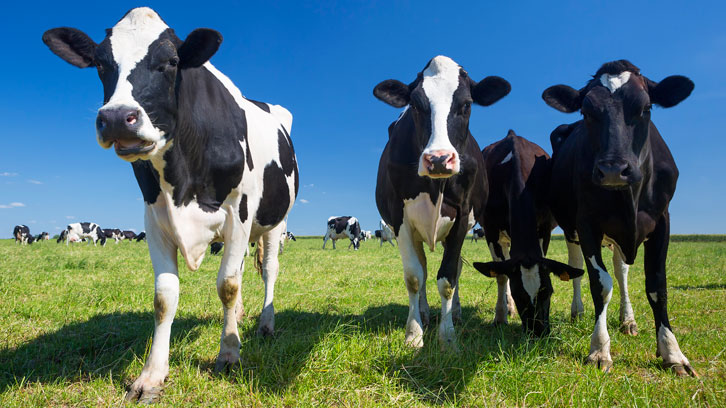A new model for the study of abortion in cattle farms infected with Neospora caninum

Neospora caninum is an intracellular obligate parasite whose infection is a leading cause of abortion in cattle worldwide. The pathogenesis of bovine neosporosis, particularly during the second term of gestation when most abortions occur in naturally infected dams, is poorly understood.
In the present study foetal death was observed in 3 of 6 experimentally infected dams at 110 days of gestation after 6 weeks of experimental period. All experimental heifers were febrile between 3 and 5 days post infection (dpi). Inoculated dams seroconverted by 3-4 weeks post-infection with higher mean antibody titres in aborting dams compared to non-aborting heifers, although differences were not significant. Neospora caninum DNA was detected in all infectedfoetuses and placentas, and three infected foetuses also had N. caninum antibodies. The parasite burden was higher in the brain of dead/aborted foetuses than in live foetuses. Interestingly, high IFN-γ production was detected in foetal fluids of a dead foetus found upon euthanasia of its dam, while no IFN-γ was observed in amniotic, allantoic and/or foetal fluids in the three infected foetuses that were alive upon maternal euthanasia.

Interestingly, in this study we were able to describe some parasitological and immunological differences in experimentally infected dams carrying live or dead foetuses. In dams, both groups of infected dams had a similar febrile response yet biphasic temperature increases were observed in 2 dams with dead/aborted foetuses which could suggest increased replication of the parasite in these dams; lower antibody levels were observed in dams with live foetuses than with dead/aborted foetuses and, one dam with an aborted foetus was the only animal to show plasma IFN-γproduction.
In conclusion, our findings confirm the occurrence of abortion in response to the experimental infection of naïve cows with 107 tachyzoites of the N. caninum strain Nc-Spain7 at 110 days of pregnancy within an experimental period of 6 weeks after infection. The fact that some dams aborted and some did not is relevant to understand N. caninum induced pathogenesis of abortion in naturally infected cows in the second term of gestation, when most abortion occurs under field conditions.
Centre de Recerca en Sanitat Animal (CReSA)-IRTA
Department of Animal Health and Anatomy
Universitat Autònoma de Barcelona
sonia.almeria@uab.cat
Fernando López Gatius
Departamento de Producción Animal
Universitat de Lleida
Beatriz Serrano Pérez
Departamento de Producción Animal
Universitat de Lleida
References
Sonia Almería et al. Foetal death in naive heifers inoculated with Neospora caninum isolate Nc-Spain7 at 110 days of pregnancy. Experimental Parasitology. 2016 Sep; Vol 168: 62-69, doi: 10.1016/j.exppara.2016.06.009. ISSN 0014-4894


